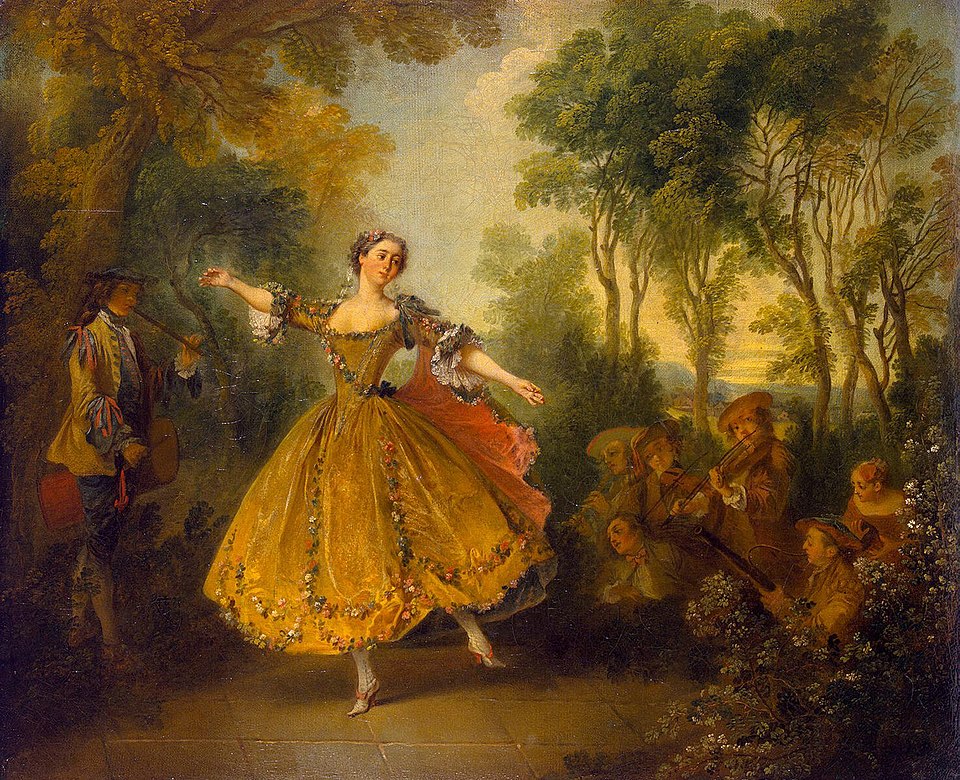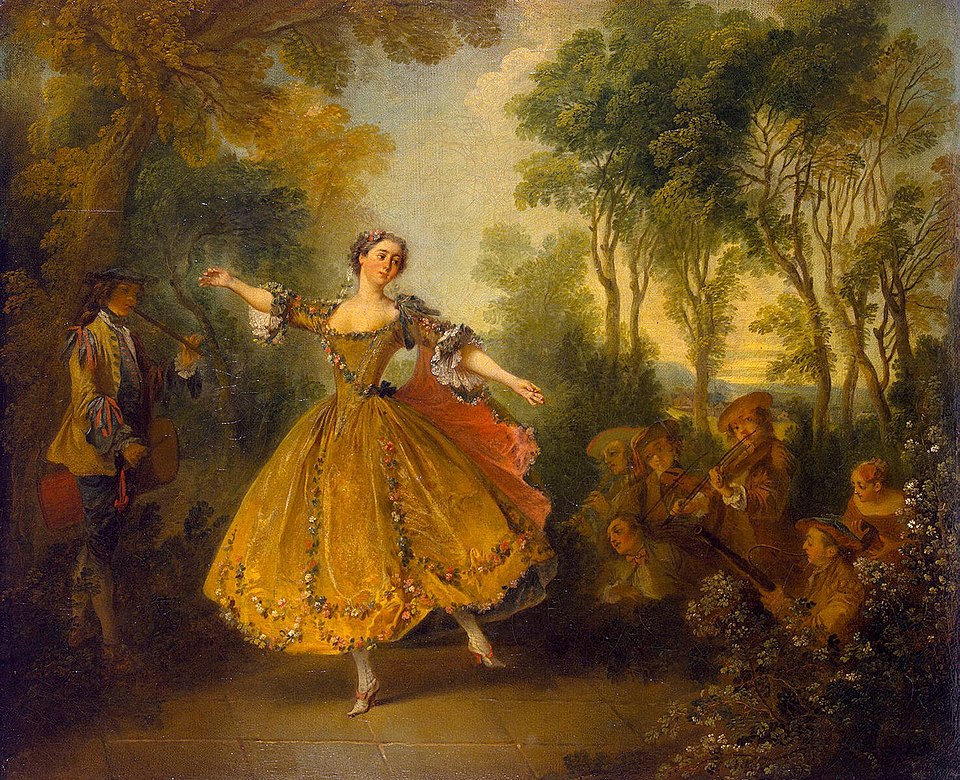
«THE CAMARGO DANCE» OR CAMARGO?
...Nicolas Lancret's «Dancer Camargo». That is how I once read the title of this painting in my childhood. I was convinced that the painting depicted a dancer performing, perhaps an ancient, once-popular, and probably Spanish (judging by the colorful name) dance called the "camargo".
Time passed, and all the mistakes of childhood ignorance were corrected. Although fashion and even Spain did find their place in this story.
Before us is the graceful, poetic, and intimate portrait of Marie-Anne de Camargo. Her father, of Spanish origin, realized very early that his daughter was a very talented dancer, and the art of ballet became Marie-Anne's life and her path to success.
Scandal, boldness, compliments
It was talent, skill, and inspiration, rather than title, status, or even beauty, that made her one of the most famous and influential women in Paris. Also, courage. And, probably, a touch of adventurousness.
The famous Voltaire, one of Camargo's admirers, bestowed upon her a compliment that seems strange in our time. He said: «She was the first to equal men in dance!»
Voltaire forgot to add that in this competition with men in the art of ballet, our heroine was at a disadvantage. After all, men did not have to gather and lift a lush skirt of expensive and heavy fabric during pirouettes and steps.
The skirt itself became Camargo's most stubborn enemy. And she shortened it. By a revolutionary 20! centimeters, it is almost 8! inches.
- Naturally, this provoked a colossal scandal. The public was divided into those who accused Camargo of immorality: «She publicly displayed her legs!», and those who admired, were captivated, and applauded. And there were significantly more of the latter!
- The ballerina's fame skyrocketed! She became fashionable! Camargo-style shoes came into vogue among court ladies. Her shoemaker became the most sought-after in Paris (a «victim of fashion», so to speak, with a smile).
- And Marie-Anne de Camargo herself, her name, and her progressive ideas were not lost in the depths of history. And this, no joke, is about the power of art!
Nicolas Lancret «La Camargo Dancing»

The atmosphere of the portrait, full of transparent lightness, and the precious lace of musical voices.
Joseph Haydn, from String Quartet in F Major, Serenade.
Night, the moon, a young man in love, a guitar, a beauty, and a song-declaration of love – this is the very image our imagination paints for us when speaking of such a musical genre as the serenade. But! It was not always and not necessarily like that.
In the absence of musical abilities from our imaginary suitor for the hand and heart, for example, but given his financial means and ardent feelings, our hero could, of course, hire a singer or even an entire ensemble of musicians. And the city streets would begin to resonate with a romantic open-air concert in honor of love and beauty. Some, probably, grumbled irritably-saying they couldn't sleep... Someone else, on the contrary, would open their windows and enjoy the beautiful melodies... And the beauty...? It is difficult to imagine absolute indifference to such a sign of attention... So, modern gentlemen have something to learn!